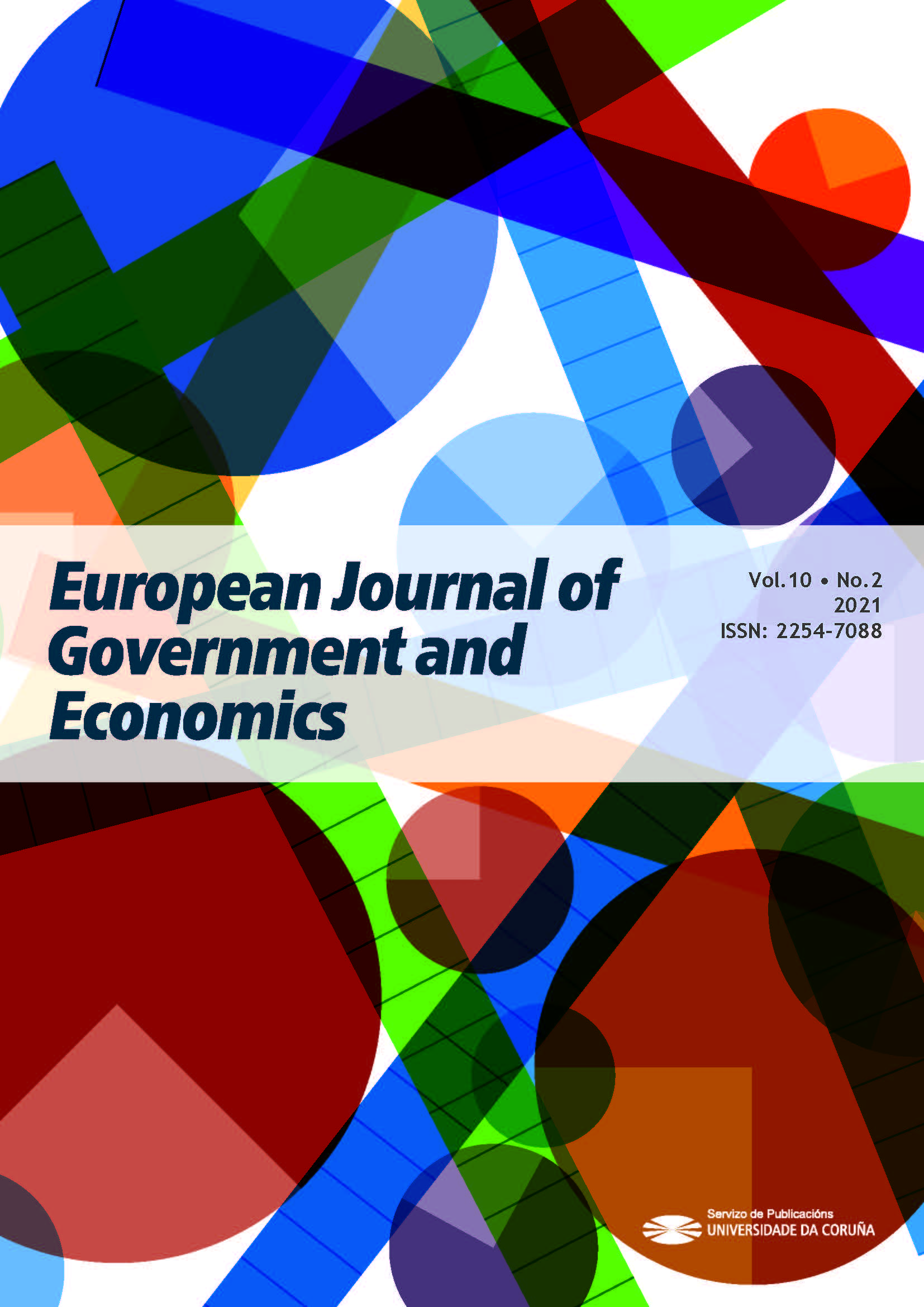Brain drain and economic growth: evidence of productivity growth from brain circulation
Main Article Content
Abstract
This paper analyzes the effect of the so-called ‘brain drain’ on economic growth through the channel of growth in total factor productivity. We analyze panel data that measure the severity of brain drain, which are from IMD and the U.S. National Science Foundation. Our analysis shows that middle-income countries have more brain drain compared to the group of high-income countries. Also, emerging economies that grow fast tend to experience more brain drain. Our results from fixed effects regression models show that that brain drain has a significant and positive impact on economic growth, and the main channel is productivity growth. This can be considered as evidence of the positive effects of ‘brain circulation’, which is one of the brain drain phenomena that settlement of the talents in advanced countries can eventually help improve the productivity of home country by the sharing of advanced technologies and skills around them with colleagues in motherland. Therefore, a strategy of utilizing overseas resident talents should also be considered, alongside the brain-attraction policy.
Keywords:
Downloads
Article Details
References
Barro, R. J. (2016). Economic Growth and Convergence, Applied to China. China and World Economy. 5(24):5-19. https://doi.org/10.1111/cwe.12172
Beine, M., Docquier, F., & Rapoport, H. (2001). Brain Drain and Economic Growth: Theory and Evidence. Journal of Development Economics, 64(1), 275-289. https://doi.org/10.1016/S0304-3878(00)00133-4
Bénassy, J. P., & Brezis, E. S. (2013). Brain Drain and Development Traps. Journal of Development Economics, 102, 15-22. https://doi.org/10.1016/j.jdeveco.2012.11.002
Bhagwati, J., & Hamada, K. (1974). The Brain Drain, International Integration of Markets for Professionals and Unemployment: A Theoretical Analysis. Journal of Development Economics, 1(1), 19-42. https://doi.org/10.1016/0304-3878(74)90020-0
Cinar, D., & Docquier, F. (2004). Brain Drain and Remittances: Implications for the Source Country. Brussels Economic Review, 47(1), 103-118.
Docquier, F., & Rapoport, H. (2008). Brain Drain and Human Capital Formation in Developing Countries: Winners and Losers. The Economic Journal, 118(528), 631-652. https://doi.org/10.1111/j.1468-0297.2008.02135.x
Feenstra R. C., Inklaar R., & Timmer M. P. (2015). The Next Generation of the Penn World Table. American Economic Review, 105(10), 3150–3182. https://doi.org/10.1257/aer.20130954
Grubel, H. B., & Scott, A. D. (1966). The International Flow of Human Capital. American Economic Review, 56(1/2), 268-274.
IMD World Competitiveness Executive Opinion Survey
IMD World Competitiveness Yearbook
Kang, D. K., E.-S Lim, & J. Hwang. (2013). An Exploratory Study on the Relationship between Brain Drain and National Competitiveness. IOM MRTC Working Paper Series, No. 2013-05. IOM Migration Research and Training Centre. Republic of Korea.
Lee, J. W. (2017). China's Economic Growth and Convergence. World Economy. 40:2455-2474. https://doi.org/10.1111/twec.12554
Lee, K. (2018). Chinese Science Paper Results Exceed the U.S. The Science Times. URL: https://www.sciencetimes.co.kr/?news=%EC%A4%91%EA%B5%AD-%EA%B3%BC%ED%95%99%EB%85%BC%EB%AC%B8-%EC%84%B1%EA%B3%BC-%EB%AF%B8%EA%B5%AD-%EC%B6%94%EC%9B%94%ED%95%9C%EB%8B%A4 (Retrieved on June 3, 2019. In Korean, title translated by the author).
Lodigiani, E., Marchiori, L., & Shen, I.-L. (2015). Revisiting the Brain Drain Literature with Insights from a Dynamic General Equilibrium World Model. The World Economy, 39(4), 557–573. https://doi.org/10.1111/twec.12269
McCulloch, R., & Yellen, J. T. (1977). Factor Mobility, Regional Development and the Distribution of Income. Journal of Political Economy, 85(1), 79-96. https://doi.org/10.1086/260546
Mountford, A. (1997). Can a Brain Drain Be Good for Growth in the Source Economy? Journal of Development Economics, 53(2), 287-303. https://doi.org/10.1016/S0304-3878(97)00021-7
Oh, H. (2016). Leakage of Korean Talents. Chosun Ilbo. http://news.chosun.com/site/data/html
_dir/2016/08/08/2016080801521.html (Retrieved on September 26, 2019. In Korean, title translated by the author).
Saxenian, A. (2005). From Brain Drain to Brain Circulation: Transnational Communities and Regional Upgrading in India and China. Studies in Comparative International Development, 40(2), 35-61. https://doi.org/10.1007/BF02686293
Song, C. Y., Oh, H. Y., Kim, H. J., & Lee, E. H. (2016). Korea Survey of Earned Doctorates, 2016. Korea Research Institute for Vocational Education & Training, KRIVET. Republic of Korea.
Stark, O., Helmenstein, C., & Prskawetz, A. (1997). A Brain Gain with a Brain Drain. Economics letters, 55(2), 227-234. https://doi.org/10.1016/S0165-1765(97)00085-2
Survey of Earned Doctorates, Doctorate Recipients from U.S. Universities, National Science Foundation (NSF), URL: https://www.nsf.gov/statistics/doctorates/
Teney, C. (2021). Immigration of Highly Skilled European Professionals to Germany: Intra-EU Brain Gain or Brain Circulation? Innovation: The European Journal of Social Science Research, 34(1), 69-92. https://doi.org/10.1080/13511610.2019.1578197
The IMD World Talent Ranking Methodology (2019). https://www.imd.org/globalassets/wcc/
docs/release-2019/talent/imd_world_talent_ranking_methodology_2019.pdf (Retrieved on November 12, 2021).
Vidal, J.-P. (1998). The Effect of Emigration on Human Capital Formation. Journal of Population Economics, 11(4), 589-600. https://doi.org/10.1007/s001480050086






